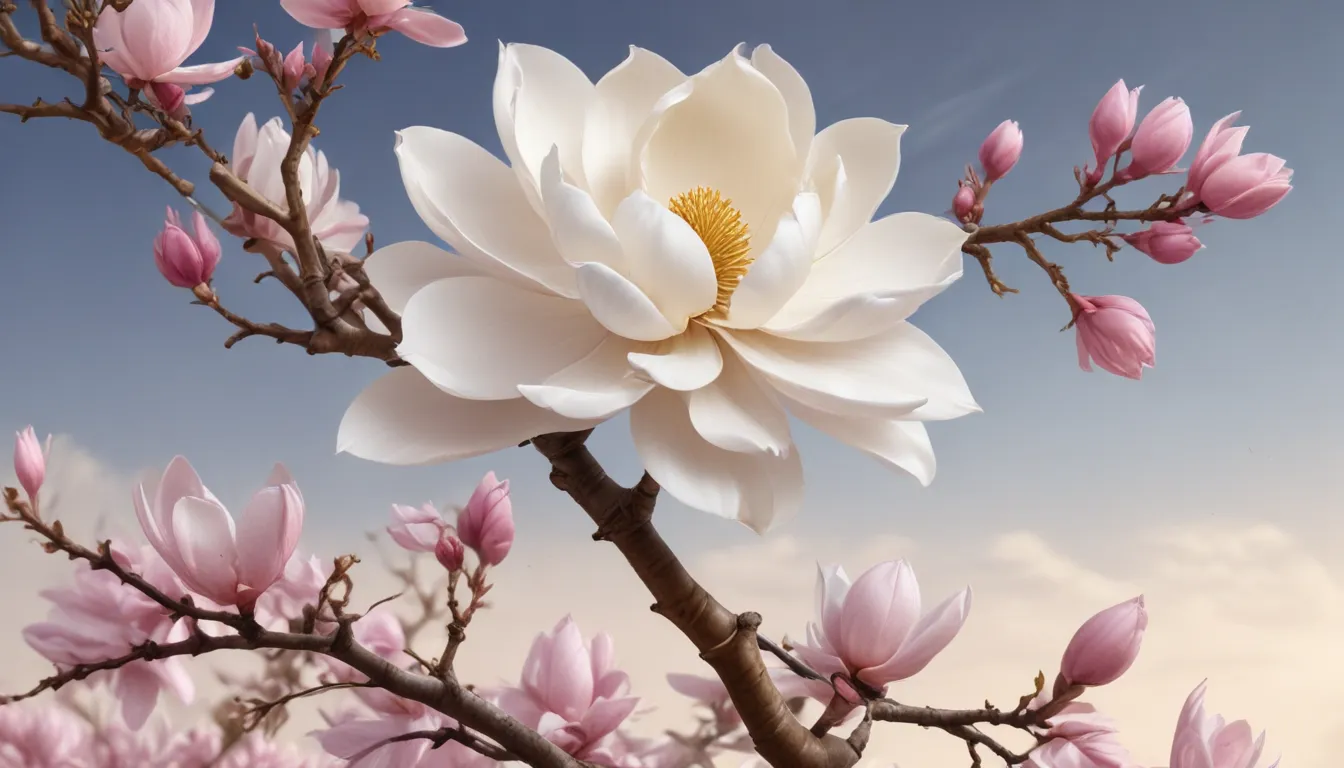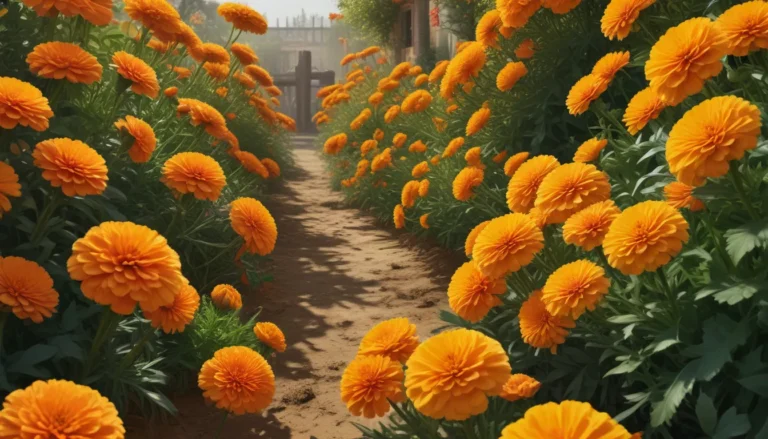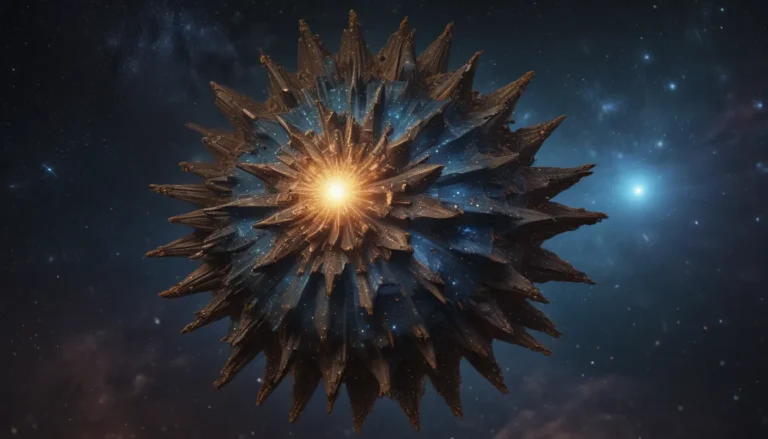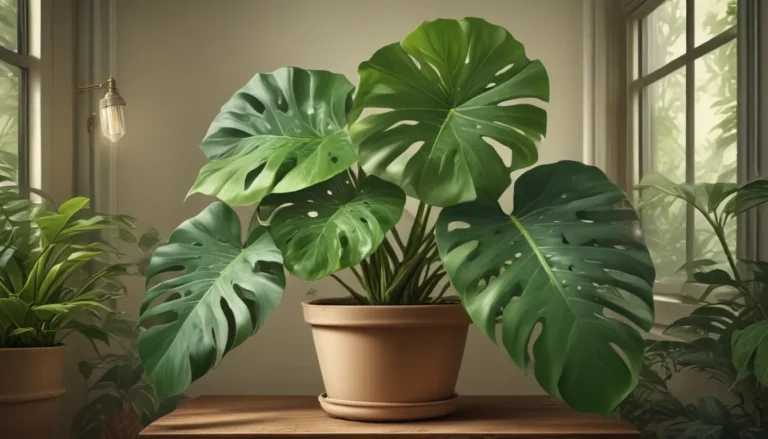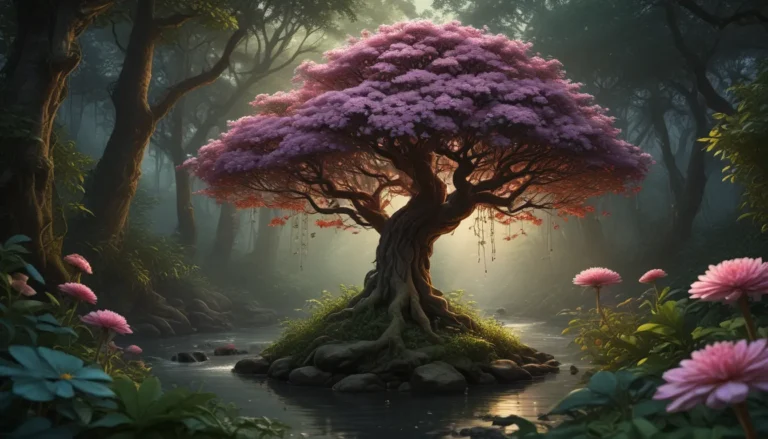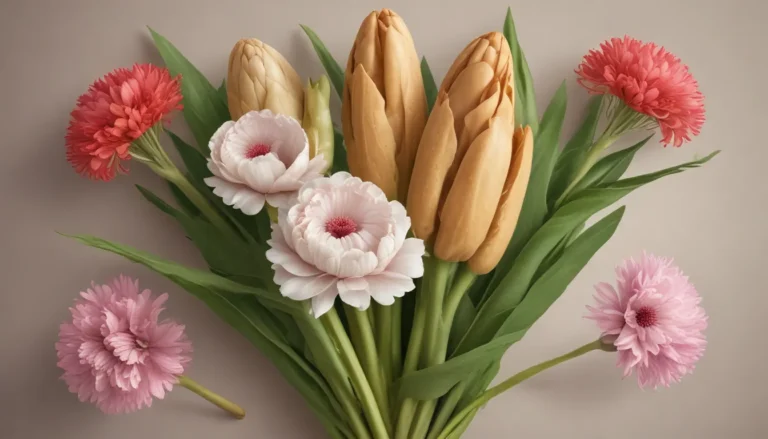The pictures we use in our articles might not show exactly what the words say. We choose these pictures to make you interested in reading more. The pictures work together with the words but don’t take their place. The words still tell you the important facts.
Magnolias have long captivated our hearts with their stunning blooms, fragrant scent, and timeless beauty. These magnificent flowering trees hold a wealth of fascinating facts that go beyond their visual appeal. From their ancient origins to their diverse species and unique characteristics, magnolias are truly remarkable plants that continue to surprise us. In this article, we will delve into the enchanting world of magnolias and uncover 17 surprising facts that will leave you in awe. So, buckle up and get ready to explore the captivating realm of magnolias!
Unveiling the World of Magnolias
Magnolias are ancient, diverse, and symbolize beauty and endurance. Their unique flowers, medicinal properties, and cultural significance make them outstanding plants for gardens and landscapes. Let's embark on a journey to discover the hidden wonders of magnolias that make them such a beloved and captivating choice for ornamental trees.
Magnolia’s Timeless Legacy
-
Ancient Roots: Magnolias are one of the oldest flowering plants on Earth, dating back over 95 million years. They have evolved even before bees and rely on beetles for pollination.
-
Symbol of Beauty: With their stunning and fragrant blossoms, magnolias have become a symbol of beauty, purity, and endurance. This makes them popular choices for weddings and special occasions.
-
Diverse Species: The magnolia family, Magnoliaceae, consists of more than 200 species. Each species boasts its own distinct characteristics, flower colors, and growing habits.
Magnolia’s Enchanting Features
-
Variety of Flowers: While most people are familiar with the large, showy flowers of magnolias, not all species have the same type of blooms. Some have cup-shaped flowers, while others have star-shaped or saucer-shaped blooms.
-
Scented Allure: Magnolia flowers produce a strong and sweet fragrance that attracts bees, butterflies, and other pollinators. The enticing scent plays a crucial role in luring pollinators towards the flowers.
-
Medicinal Marvels: Some magnolia species, like the Magnolia officinalis, have been used in traditional medicine for centuries. The bark and flowers contain compounds with anti-inflammatory and anti-anxiety properties.
Magnolia’s Cultural Significance
-
Global Icon: Magnolias hold significant cultural value in many countries. They serve as the state flowers of Mississippi and Louisiana in the United States and symbolize purity and nobility in Chinese culture.
-
Fossil Finds: Fossil evidence of magnolias has been unearthed in North America, Europe, and Asia, providing valuable insights into the evolution and distribution of magnolia species.
Magnolia’s Unique Characteristics
-
Distinctive Cones: While most magnolias produce flowers, some species, like the Magnolia fraseri, develop cone-like fruit. These unique cones not only house the plant's seeds but also add an interesting visual element to the tree.
-
Radiant Colors: Magnolia flowers come in a variety of hues, including shades of yellow, purple, red, and even green. These vibrant colors add a picturesque touch to gardens and landscapes.
Exploring the Practical Side of Magnolias
Magnolias offer more than just visual appeal. Their wood is highly valued, they have long blooming periods, and they can reach impressive heights. Let's uncover some more fascinating facts about the practical aspects of these magnificent trees.
Magnolia’s Practical Perks
-
Valuable Wood: The wood of magnolia trees is highly prized for its strength, durability, and beautiful grain patterns. It is commonly used in furniture making, cabinetry, and musical instruments.
-
Extended Blooming: Depending on the species, magnolia flowers can bloom for several weeks or even months, offering a prolonged spectacle of beauty throughout the year.
-
Pest Resistance: Magnolia trees are known for their resilience against pests and diseases, making them relatively easy to maintain and less prone to damage.
Magnolia’s Majestic Presence
-
Impressive Heights: Some magnolia species, such as the Southern Magnolia (Magnolia grandiflora), can soar to heights of up to 80 feet, providing shade and beauty in parks and gardens.
-
Unique Foliage: The leaves of magnolia trees are often large, glossy, and possess a unique shape and texture that adds an attractive element to the tree even when not in bloom.
Magnolia’s Ornamental Appeal
-
Garden Gems: Due to their exquisite flowers, distinctive foliage, and long blooming periods, magnolias are highly sought-after as ornamental trees in gardens and parks, creating a focal point and enhancing the landscape's aesthetics.
-
Timeless Elegance: When properly cared for, magnolia trees can live for centuries, showcasing their resilience and adaptability to various environmental conditions.
Embracing the Magnificence of Magnolias
In conclusion, magnolias stand as a testament to nature's beauty, resilience, and enduring charm. Whether you're a gardening enthusiast or simply appreciate the wonders of nature, magnolias offer a perfect blend of elegance and grace to enrich any landscape. So, take a moment to immerse yourself in the enchanting world of magnolias, and revel in the surprises and delights they have to offer.
FAQs: Exploring Magnolia Mysteries
-
Habitat: Magnolias can be found across various regions worldwide, including Asia, the Americas, and parts of Africa.
-
Flower Size: While some magnolias boast large, showy flowers, others may have smaller or more discreet blooms depending on the species.
-
Cultivation: Magnolias are generally easy to grow, but certain species may require specific care to thrive optimally.
-
Container Gardening: Many magnolia varieties can be grown in containers with proper selection and maintenance.
-
Medicinal Uses: Certain parts of magnolia plants have been traditionally used for various health purposes.
-
Blooming Duration: The lifespan of magnolia flowers varies, lasting from several days to a couple of weeks on average.
-
Propagation: Many magnolia varieties can be propagated from cuttings by following appropriate techniques.
Your Feedback Matters
Our dedication to delivering accurate and engaging content is at the core of our mission. Each fact on our site is contributed by real users like you, offering a diverse range of insights and information. With our committed editors rigorously reviewing each submission, we ensure that the facts shared are not only fascinating but also credible. Trust in our commitment to quality and authenticity as you embark on a journey of exploration and learning with us.
